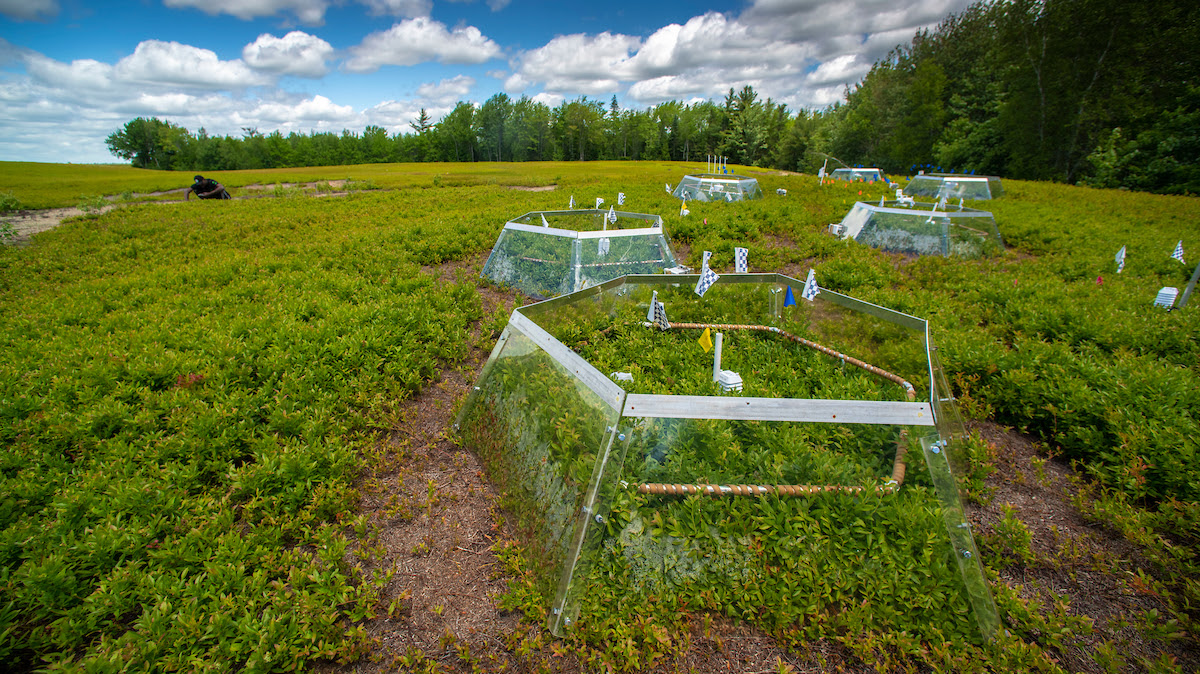
Improving blueberry yield in a challenging climate
From wildfires and rising sea levels to the drought stress of plant species in our own backyard, the ubiquitous effects of climate change can be seen around the globe. At the University of Maine, researchers are studying how climate change is impacting Maine’s crops to better understand how to adapt. UMaine associate professor of plant physiology Yong-Jiang Zhang and Ph.D. candidate Kallol Barai are utilizing aerial imagery to help guard one of Maine’s most prized crops, the wild blueberry, against a warming future.
Indigenous peoples have resided in what is now Maine since time immemorial and were the first to harvest wild, lowbush blueberries. The cultivation of this crop has gone largely unchanged over the past centuries and remains a staple in New England, specifically Maine, and parts of Canada’s Maritime provinces. These blueberries vary considerably compared to their highbush counterparts not only in size and appearance but also nutrient content and cultural significance.
Maine, and New England broadly, is warming faster due to climate change than other areas of the United States. “To reduce the impact of climate anomalies caused by climate change, different crop-specific farm management and risk mitigation strategies need to be explored and developed,” Zhang and Barai said.
Together, Zhang and Barai have developed non-destructive methods to estimate blueberry yields and water stress using dron-ebased imagery. Work is ongoing to develop a model using drone-based imagery for non-destructive estimation of crop nutrients for precision agriculture.
Their study in yield estimation model development for blueberries utilizes RGB imagery, which allows them to create a map of yield over a field that had previously only been done manually. This gives growers the ability to estimate yield at different management zones and helps them make decisions to better manage their fields. Their study in the water stress detection model using drone thermal imagery can help optimize irrigation timing and quantity, ultimately helping maximize yields.
Their ongoing research using drone-based hyperspectral imagery for precise nutrient management incorporates machine learning to develop a better model for crop nutrient status detection. With the data they’ve collected, Zhang and Barai plan to create a map to detect the current nutrient status in the field with the goal of optimizing fertilization.
The research team has worked closely with collaborators inside and outside of UMaine across different disciplines with partners such as Jasper Wyman’s & Sons. “We are really open to collaborations and we work with a lot of people on campus and outside of UMaine,” Zhang explained. “We are working with partners at the College of Engineering and Computing on drones, sensors, remote sensing, and also using nanomaterials like nanocellulose produced at the Process Development Center.” This is the sort of collaboration required to take on the biggest problems facing Maine.
Ideally, the models developed by Zhang and Barai can be adapted to manage other crops as well to maximize yield. If current trends continue growers will likely need to change management practices, incorporate new optimized irrigation and fertilization systems, or introduce new fertilizers. By improving the analyses of crops, researchers can help make that transition easier and allow growers to make target changes to what has worked for centuries and preserve part of the region’s fabric.
Written by: Matthew L
Contact: Daniel Timmermann daniel.timmermann@maine.edu
